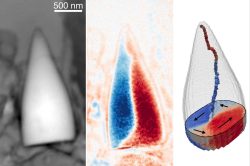
Banknotes of Japanese yen are seen in this illustration picture taken September 23, 2022.
16:59 JST, October 6, 2022
BENGALURU (Reuters) – Japan’s yen will recoup only a third of its big losses against the dollar in the coming year as the policy gap between the ultra-hawkish U.S. Federal Reserve and the extremely dovish Bank of Japan is set to widen further, a Reuters poll found.
The policy divergence has battered the currency JPY=. It has lost over a fifth of its value this year and hit a 24-year low of 146/dollar recently, so authorities intervened in the foreign exchange market for the first time since 1998 last month, spending 2.8 trillion yen.
Despite the intervention and expectations of more to come, the yen’s weakness is not over yet as BOJ Governor Haruhiko Kuroda is unlikely to reverse his long-held pledge to keep policy ultra-loose anytime soon.
The currency, the worst performer among its G10 peers, will trade around the current 144 versus the U.S. dollar at year-end, according to FX strategists in a Reuters Sept. 30-Oct. 5 poll.
If realized, the yearly loss of more than 20% would be the biggest since 1970.
“USD/JPY’s uptrend unlikely to reverse as it is supported by U.S.-Japan policy gap and balance of payment deficit, while intervention was unilateral,” said Shusuke Yamada, FX strategist at Bank of America Securities.
“The Ministry of Finance trying to manage FX volume may suggest the BOJ not yet under pressure from the government to modify policy in response to weak yen.”
This year’s rise in U.S. Treasury yields has put upward pressure on benchmark 10-year JGB yields leading the BOJ, which remains an outlier among global central banks, to go for massive bond-buying to protect its de facto yield cap that fueled the yen’s slide.
Core consumer inflation in Tokyo was its highest since 2014 in September and is a leading indicator of nationwide price rises. That means inflation is likely to stay above the central bank’s 2% target in the near future, potentially making it harder for the BOJ to justify its ultra-easy policy.
Meanwhile, the Federal Reserve, which delivered its third straight 75 basis points hike last month, was expected to continue with aggressive rate hikes, paving the way for the U.S. dollar to remain strong.
Although the yen, until recently a safe haven for investors during financial market turmoil, was predicted to gain around 7% to trade at 135 against the dollar over the coming year it would be only a third of this year’s losses of over 20%.
Also, nearly a third, 18 of 60 strategists predicted the currency to trade above the 24-year low of 145.89/$ at some point in the next year.
“The determination of the BOJ to maintain its ultra-loose monetary stance through yield curve control has been a clear signal for selling the yen,” noted Derek Halpenny, head of research at MUFG.
“It is hard to see a turn in USD/JPY now even after intervention by the MoF. The Fed and global central banks have more tightening to do while the BOJ does nothing but ease.”
"Business" POPULAR ARTICLE
-

Govt Plans to Urge Municipalities to Help Residents Cope with Rising Prices
-

Japan Resumes Scallop Exports to China
-

Japan Prime Minister Takaichi Vows to Have Country Exit Deflation, Closely Monitor Economic Indicators
-

Japan GDP Down Annualized 1.8% in July-Sept.
-

JR East Suica’s Penguin to Retire at End of FY2026; Baton to be Passed to New Character
JN ACCESS RANKING
-

Govt Plans to Urge Municipalities to Help Residents Cope with Rising Prices
-

Japan Resumes Scallop Exports to China
-

Japan Prime Minister Takaichi Vows to Have Country Exit Deflation, Closely Monitor Economic Indicators
-

Japan to Charge Foreigners More for Residence Permits, Looking to Align with Western Countries
-

Japan GDP Down Annualized 1.8% in July-Sept.






















